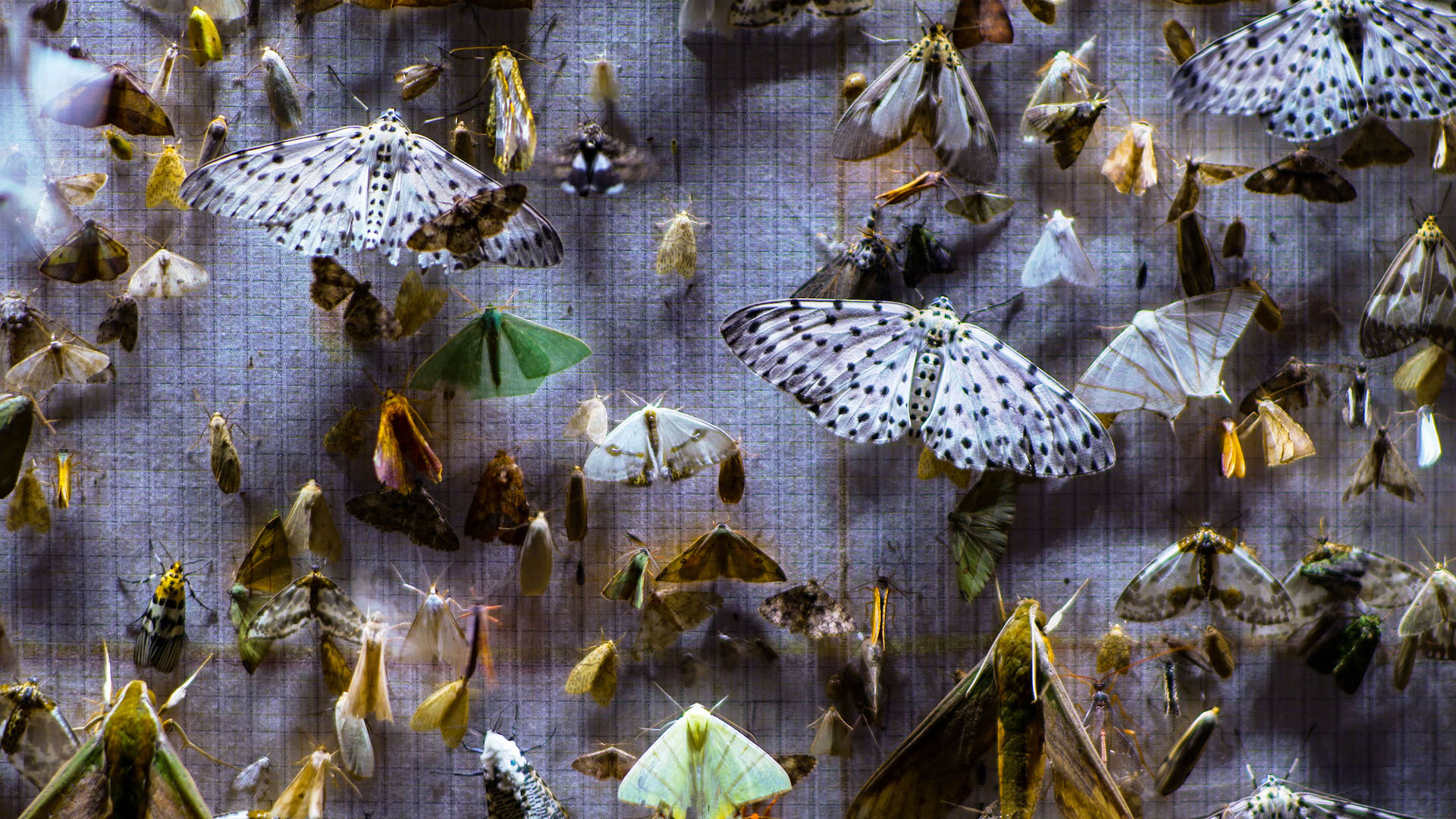
At first, you will likely think you’re hearing steady raindrops falling on the large, lit-up tarp that ecologist Mansi Mungee and her Bugun assistant Bicki carefully spread out each night in the far reaches of the Eastern Himalayan forest. It’s a gentle, constant patter, soothing and a little strange. But as filmmakers Anirban Dutta and Anupama Srinivasan pull out from the tarp, into the clear and dark evening air, you’ll realize: it’s not rain, it’s moths.
In “Nocturnes,” Dutta and Srinivasan’s alluring, immersive documentary, such discoveries are commonplace, an unfolding stream of curious observations that build to a deeply satisfying conclusion. But that doesn’t mean that the film‘s end in any way signifies, well, an end, as it seems more likely to inspire a desire for continued engagement and education on the winged creatures that populate it. Put it this way: If audiences don’t walk out of “Nocturnes” immediately googling “hawk moths,” they’ve simply been too temporarily dazzled to re-enter a world of fast-paced technology. That’s a good thing.
Dutta and Srinivasan’s feature follows Mansi and Bicki (a member of the local indigenous Bugun community, temporarily employed to help Mansi with her research) as they attempt to track and measure the size of hawk moths at various spots in an Eastern Himalayan forest. Mansi is curious about how the moths’ size changes at different elevations; and, as global temperatures rise, she worries that the moths will venture to higher spaces to live, which will inevitably push out other kinds of moths, all struggling to journey to the last cool spots on a rapidly heating planet. Fans of nature-based documentaries that also chronicle compelling humans, like “All That Breathes” and “Fire of Love,” will spark to the film, but also anyone looking for a true cinematic escape.
Mansi and Bicki’s work is meticulous and meditative, as the pair spend each evening waiting for the hawk moths (and Mansi soon tells us why “only hawk moths” will do) to arrive on their tarp, where they can take pictures of each and measure them later. Sometimes, the large moths will come. Sometimes, they don’t. Always, there are dozens and dozens of different moths that adorn the sheet, dazzling in the sheer scope of their appearance, so many different sizes and colors and shapes. It’s easy to see why moths have so enthralled Mansi (and, eventually Bicki, who eagerly absorbs every thing Mansi tells him).
Dutta and Srinivasan wisely spend many moments simply basking in the glow of the moths, gently sliding their camera over the tarp to let us feast our eyes on the winged creatures, flapping away, others constantly landing and taking off, a lulling patter more lulling than raindrops, and infinitely more unpredictable. Sometimes, little moths land on big moths. Some moths get so still we worry they’ve passed on. Some stun in their colors (blues and greens and yellows) and patterns (polka dots and stripes and little bits that look like skulls or eyes), and as Mansi and Bicki exclaim and pore over their visitors, we do, too.
Such a bent toward observation and experience will inevitably lead to further ruminations from its audience. Mostly, this writer was struck by how much the experience of watching “Nocturnes” felt like the experience of birdwatching (a hobby picked up during the earliest days of the pandemic that has maintained a huge hold over my life). There’s the waiting, the anticipation, the thrill of a find, the disappointment of too brief a sighting. And there’s also the bond that forms with the people around us, trading stories, swapping trivia, an element that Mansi and Bicki’s natural and quite sweet chemistry easily brings to “Nocturnes.” Bicki, he tells Mansi, wasn’t really into moths before he picked up this job, but as he asks her question after question, he too becomes consumed by the creatures and their fascinating lives.
Mansi narrates throughout, though Dutta and Srinivasan mostly avoid piling on too much extraneous information about her work, instead focusing on the tasks at hand. At one point, Mansi mentions she’s only “allowed” to spend certain times in the forest — allowed by who? prohibited by what? — but as she resumes her evening-time work, moving slowly back and forth and examining her finds, “Nocturnes” lulls its audience back into the task at hand. It’s looking and seeing, observing and feeling, and existing entirely in the moment. Time doesn’t stop in the world of “Nocturnes,” but in this introspective and captivating doc, a respite isn’t just possible, it’s imperative.
Grade: A-
“Nocturnes” premiered at the 2024 Sundance Film Festival. It is currently seeking distribution.





